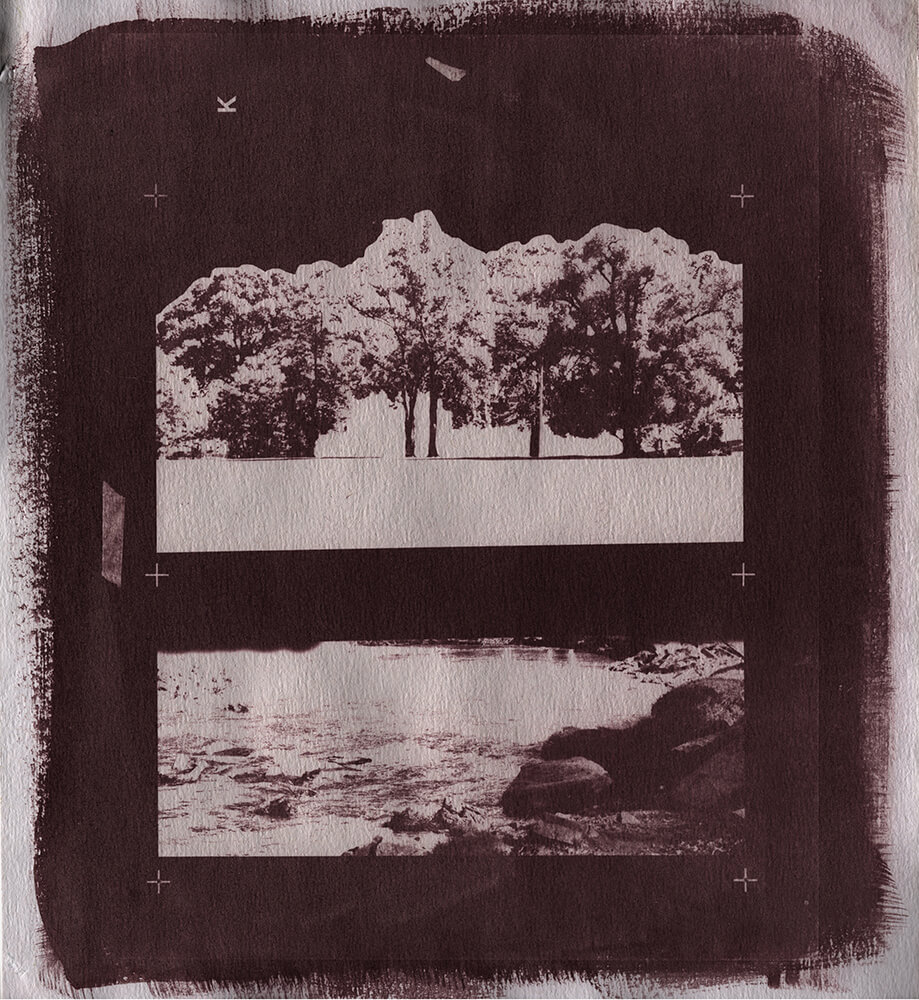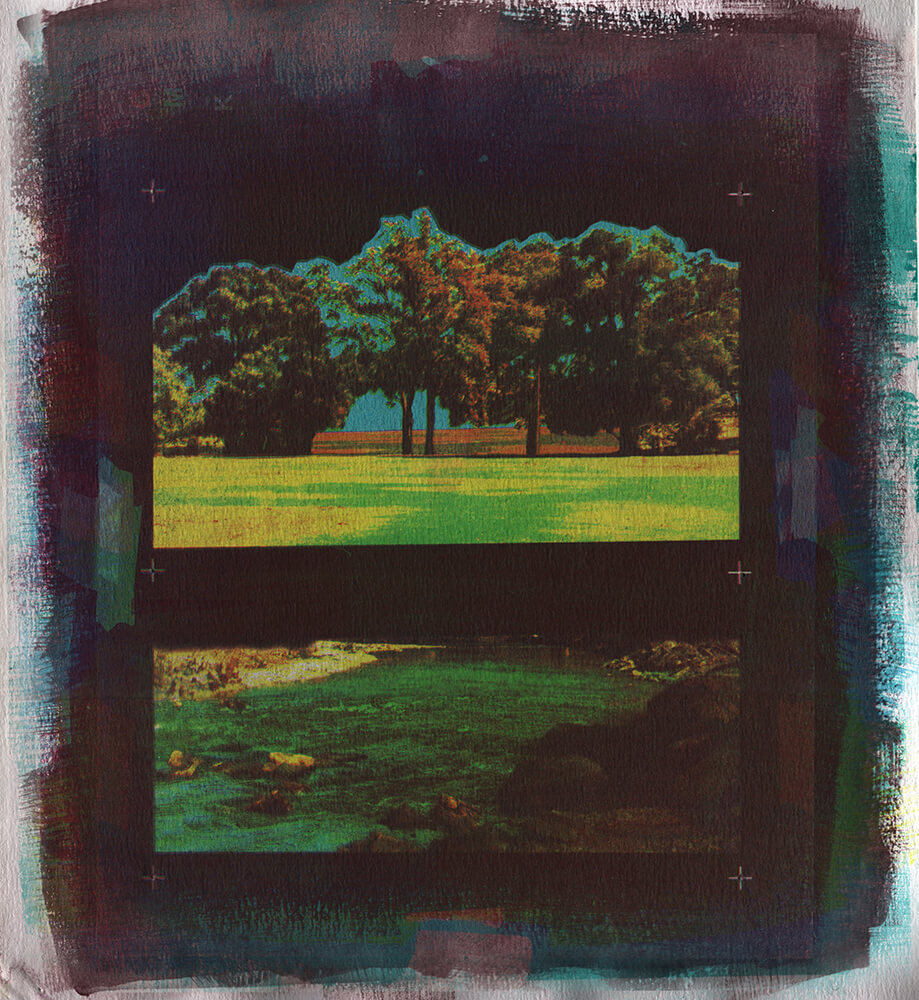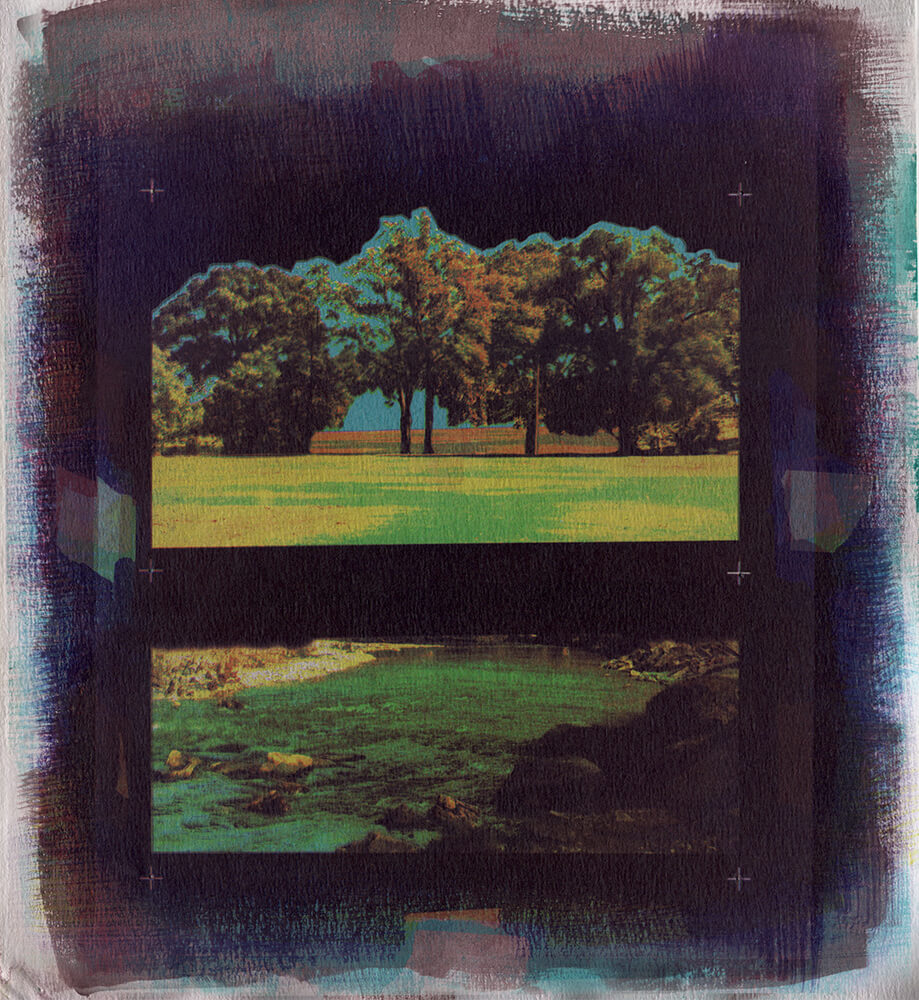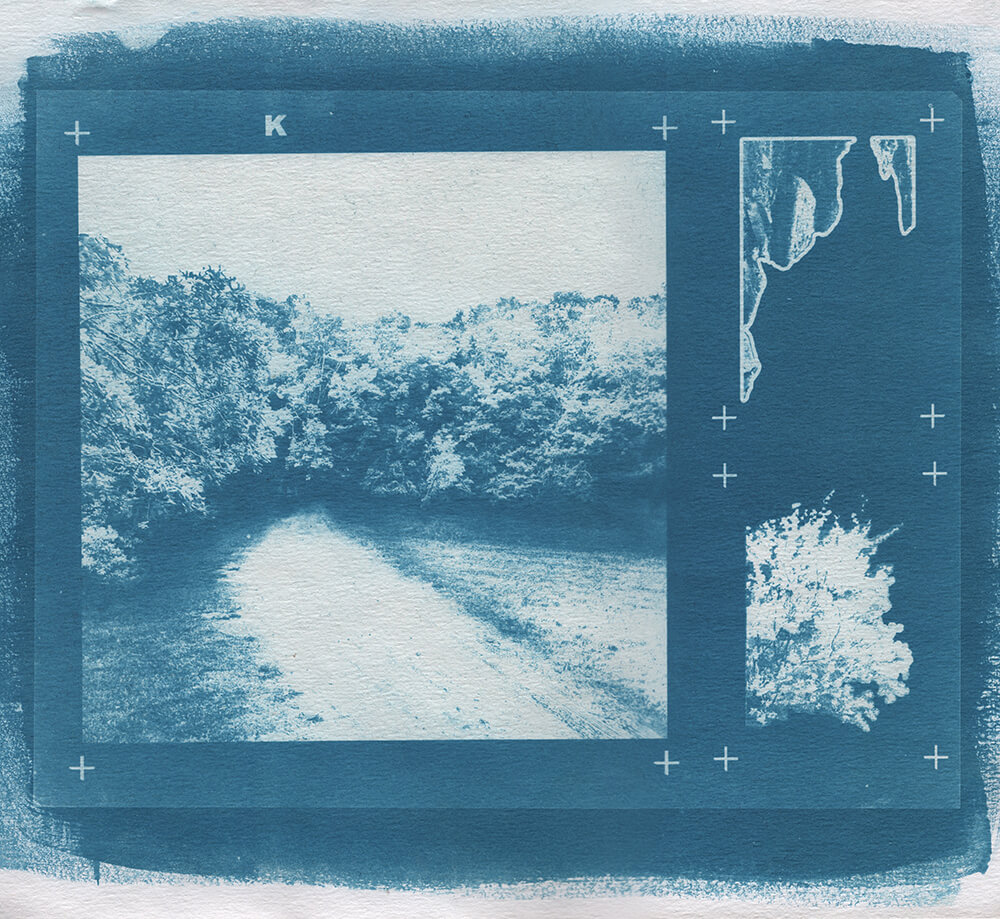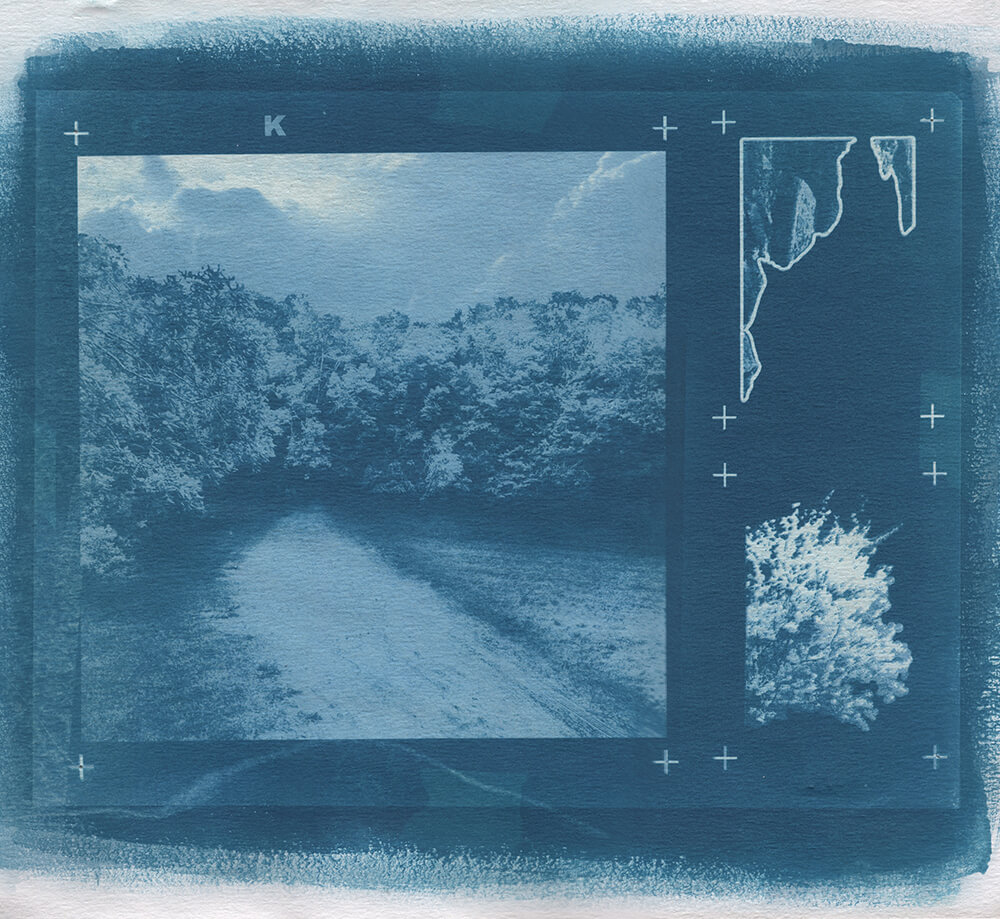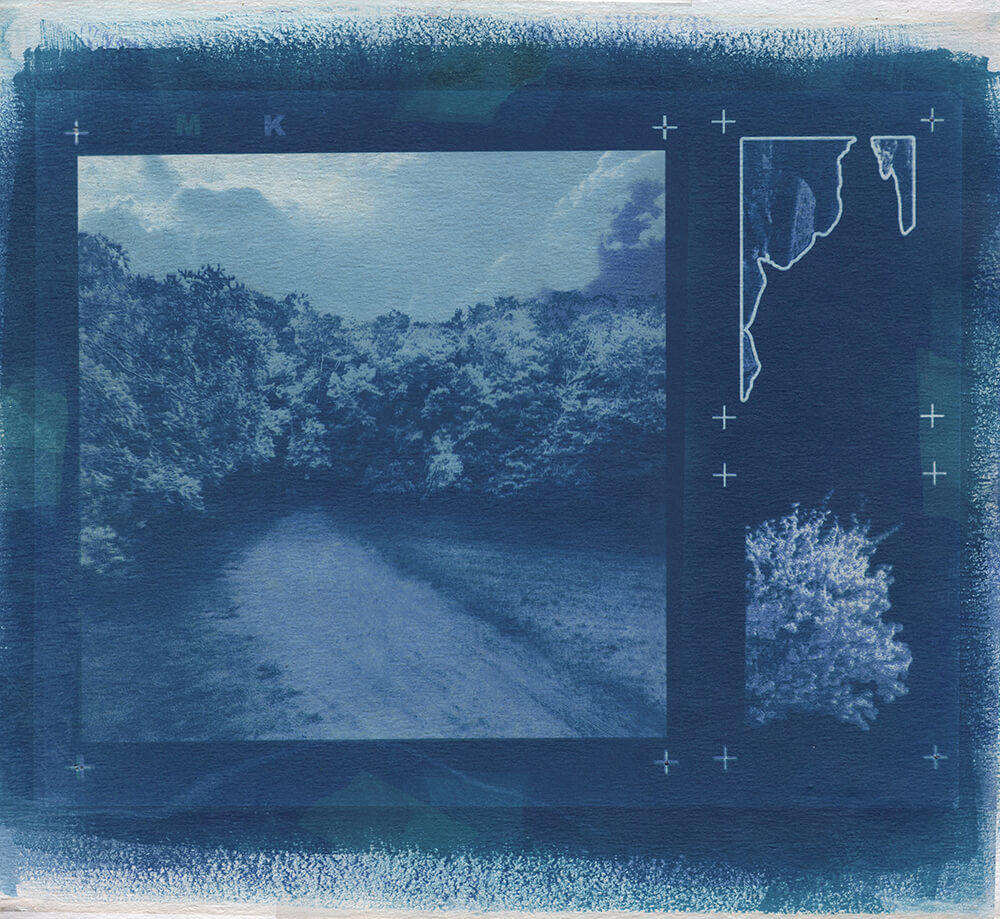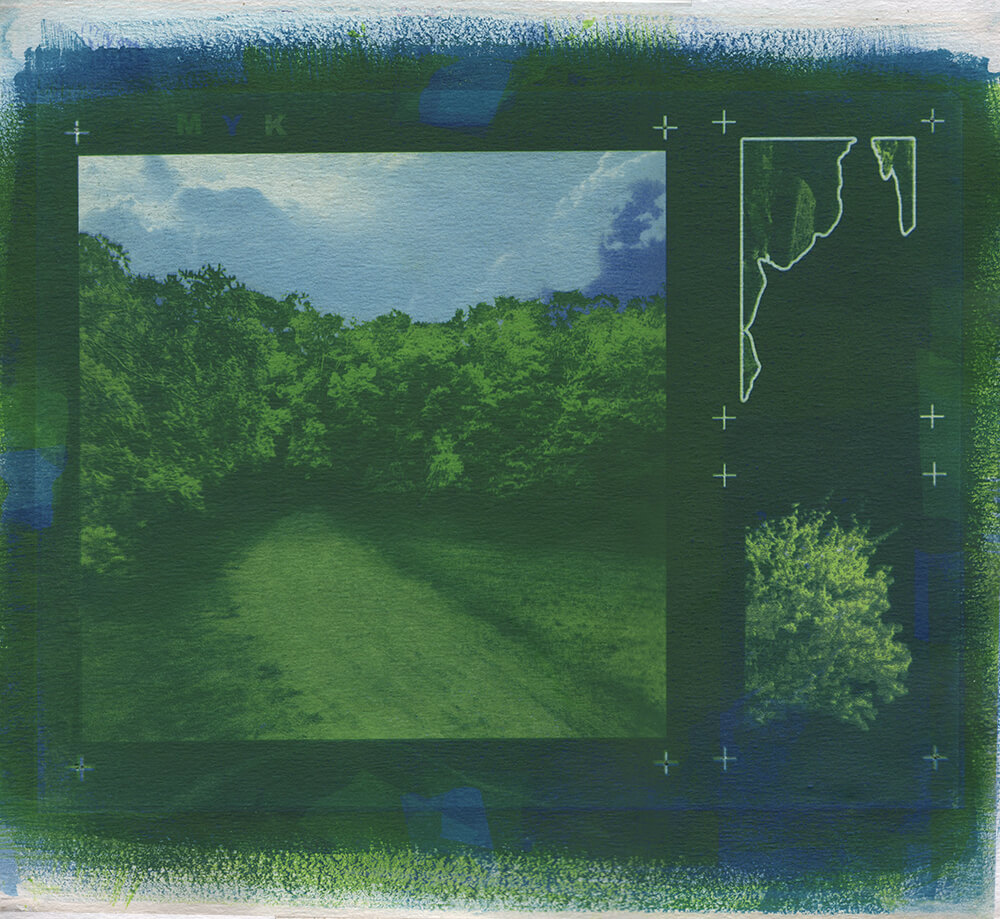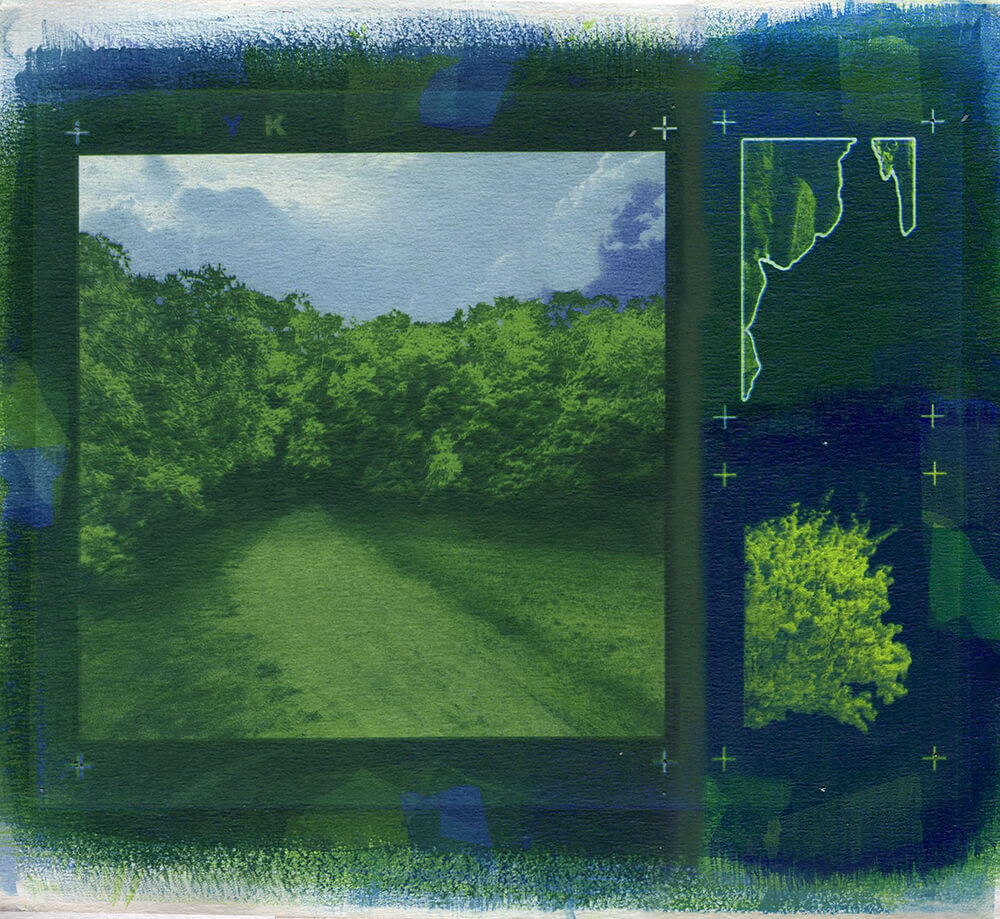Step Two: Gum Bichromate Prints
In the gum bichromate process, watercolor pigment is blended with gum arabic. The resulting pigmented gum is combined with a solution of light-sensitive chromium salts and this emulsion is then brushed onto the surface of paper that has been sized. When an exposed gum print is submerged in water, the emulsion - including the orange chromium solution - remains attached to areas that were exposed to UV light. These gum bichromate prints are exposed in sunlight in multiple layers using color-separated (CMYK) digital negatives of the Landscape Collages in Step One. On a piece of sensitized watercolor-paper, I first start by making an exposure using the Black (K) layer negative. Then the Blue (C) layer, the Yellow (Y) layer, and the Magenta (M) layer - in whatever order I feel is right for the colors of that landscape. After those four exposures, I may go back and reprint any of the color layers again to achieve the look I want as a final result.
These prints will be cut into pieces for the next step of this project. See Step Three >
